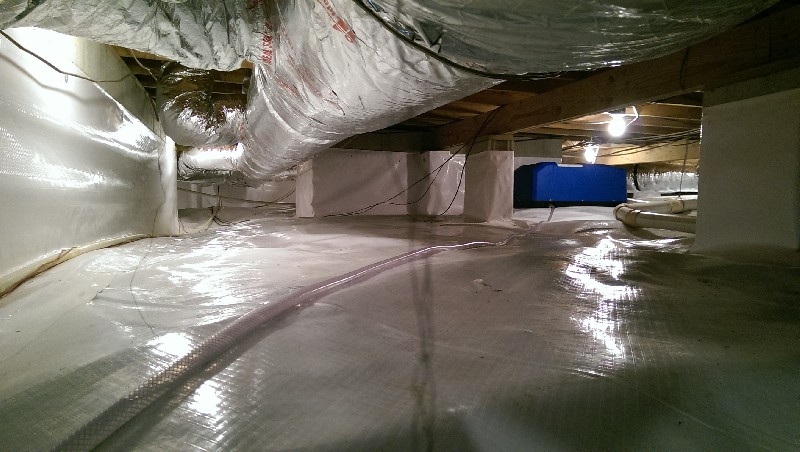High moisture levels can be detrimental to wood floor systems with traditionally vented crawl spaces. We handle subfloor, joist and girder repairs.
Wet Crawl Spaces and Damaged Floor Framing A crawl space with high humidity and standing water can have a detrimental effect on the wood framing members of your home or building. Over time, a traditional vented crawl space with drainage or moisture issues can cause mold, mildew, and fungus to grow and spread on the wood framing. Prolonged exposure these elements can severely damage the wood, causing the framing to fail.
Many times, there are multiple factors that can augment this problem. Hills, slopes, roof run-off, downspouts and grade issues can funnel water directly into the crawl space and saturate the entire area. Sometimes, poorly graded areas can also allow run-off to flow through open foundation vents and wells.
- Lack of a vapor barrier or poorly installed vapor barriers allows water vapor to accumulate on framing
- Crawl space vents can allow moist humid air into a crawl space, but do not adequately provide enough air exchange to dry the air. Even crawl spaces with ventilation fans fail because as they exhaust air through crawl space vents, they intake outside air through other open vents. If the outside humidity is higher than 50%, these fans are drawing humid air into the crawl space but not drying the air. Fans do not remove water vapor from the air or lower the humidity.
- Leaking or poorly sealed duct work will allow addition moisture to develop through condensation where the hot/cold air meets.
Managing Each Problem First, we have to first stop water from entering the crawl space. Even fully encapsulated crawl spaces will not work if water is actively flowing into the crawl space. Redirecting the water with grading, retaining walls, french drain systems, catch basins, and drainage pipes allow the crawl space to gradually dry. We use pvc perforated and drainage pipe in every system we install. While pvc is more expensive than standard black corrugated drainage pipe, it holds less sediment and debris, it can be cleared of blockages with standard or jet style pipe rooters, and will last indefinitely.Â
Then, if the crawl space has ductwork, most times it is poorly sealed and insulated. Therefore, we remove the leaky ductwork. This allows our team more access to properly encapsulate the area.
Once the ductwork has been removed we inspect the floor framing for rotten of damaged wood and repair the damage found.Â
Next, we encapsulate and fully seal the crawl space with heavy duty liners that are sealed and taped to minimize the water vapor from entering the crawl space. We also recommend installing a drainage mat and sump pump under the liner. That way, any water that does accumulate under the liner can be drained to the outside. Most importantly, we add a dehumidifier to control the humidity levels and a remote monitoring device that allows you to check the humidity without getting in the crawl space. You can add a dehumidifier to a crawl space without encapsulating the space however it would like not lower humidity levels, especially during the summer months. Imagine trying to condition your home with all of the windows open. The liner and dehumidifier together provide a controlled environment that minimize any future mold and fungus growth.
Then we reinstall we install new properly sealed and insulated lines that are supported and held off the crawl space floor.Â
We also recommend installing a lighting system. This helps our team during the work and aids in future inspections and maintenance.
